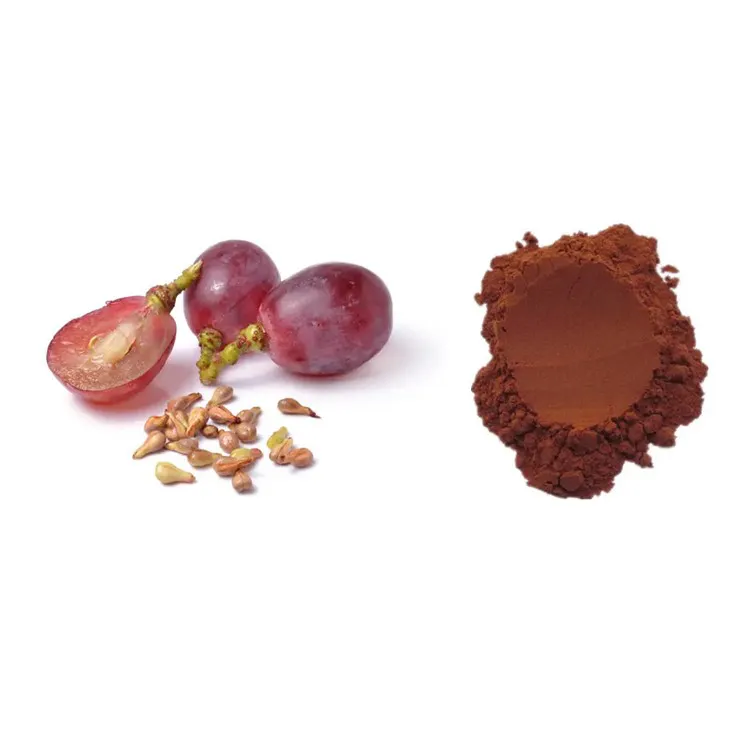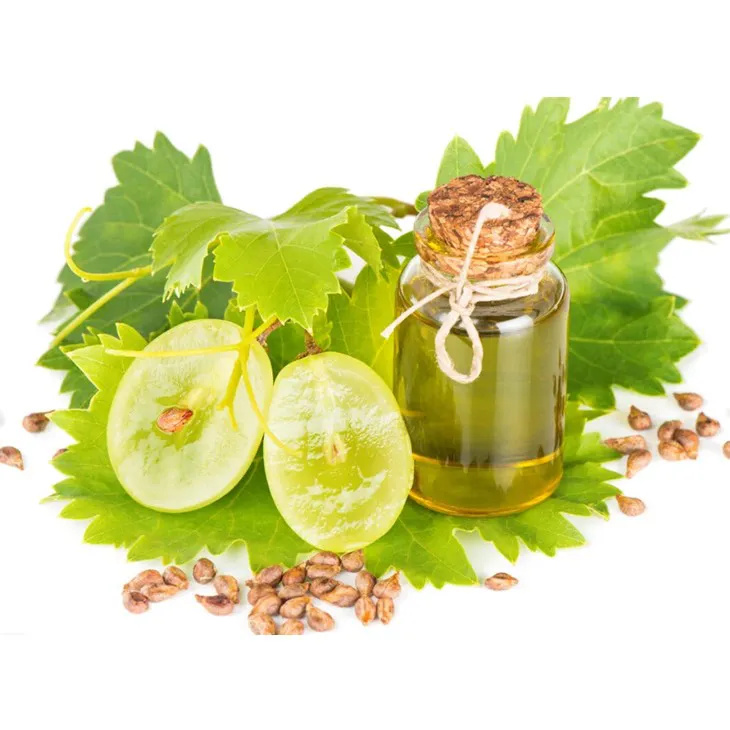- 0086-571-85302990
- sales@greenskybio.com
Understand the main processes in the manufacture of natural grape seed extract in the food industry.
2024-12-20

1. Introduction
In the food industry, natural Grape Seed Extract has gained significant popularity due to its potential health benefits. It is rich in antioxidants such as proanthocyanidins, which are known for their anti - inflammatory and antioxidant properties. The manufacturing process of this extract is a crucial aspect to ensure its quality and usability in various food products.

2. Raw Material: Grape Seeds
Grape seeds are the starting point of the manufacturing process. These are typically by - products from wineries after the grape - crushing process. Winemaking involves crushing grapes to extract the juice for fermentation. The remaining seeds, which were previously considered waste, have now become a valuable raw material.

3. Pre - treatment of Grape Seeds
3.1 Cleaning
The first step in pre - treatment is cleaning. Grape seeds may contain various foreign materials such as pieces of grape skins, stems, or dirt. A comprehensive cleaning process is essential to remove these impurities. This can involve washing the seeds with water or using mechanical cleaning methods to ensure that only clean seeds are used for further processing.
3.2 Drying
After cleaning, the seeds need to be dried. Drying is important to reduce the moisture content of the seeds. High moisture content can lead to spoilage or the growth of microorganisms during subsequent processing steps. Different drying methods can be used, such as air - drying or using drying equipment like dehydrators. The drying process should be carefully controlled to ensure that the seeds are dried to the appropriate moisture level without losing their nutritional properties.

4. Grinding of Grape Seeds
Once the seeds are dried, they are ground into a powder. The fineness of the powder can vary depending on the extraction requirements. For some extraction methods, a coarse powder may be sufficient, while for others, a fine powder is preferred. Grinding the seeds into a powder increases the surface area, which is beneficial for the extraction process as it allows for better contact between the seeds and the extraction solvent.

5. Extraction Process
The extraction process is a key step in obtaining Grape Seed Extract. Different solvents can be used depending on the desired end - product characteristics.
5.1 Traditional Solvent Extraction
One common method is using organic solvents such as ethanol or methanol. These solvents are able to dissolve the active compounds present in the grape seeds. The ground seeds are mixed with the solvent in a suitable container, and the mixture is stirred or agitated for a certain period. This allows the active compounds to be transferred from the seeds into the solvent. However, one drawback of using organic solvents is the need for subsequent solvent removal and purification steps to ensure that no solvent residues remain in the final product.
5.2 Supercritical Carbon Dioxide Extraction
Supercritical carbon dioxide extraction is an emerging and more "green" method. Carbon dioxide is used in its supercritical state, which has properties between those of a gas and a liquid. In this state, it can effectively extract the active compounds from the grape seeds. One advantage of this method is that carbon dioxide is non - toxic, non - flammable, and can be easily removed from the extract after extraction, leaving no harmful residues. It also allows for better control of the extraction process, resulting in a more pure and high - quality extract.

6. Purification of the Extract
After extraction, the extract contains not only the desired active compounds but also the solvent and other impurities. Therefore, a series of purification steps are required.
6.1 Membrane Filtration
Membrane filtration is one of the important purification methods. It uses a semi - permeable membrane to separate the extract from the solvent and larger impurities. The membrane allows the smaller active compounds to pass through while retaining the larger particles and solvent molecules. This helps in obtaining a purer extract. Different types of membranes can be used depending on the size of the compounds to be separated.
6.2 Other Purification Steps
In addition to membrane filtration, other techniques such as chromatography may also be used for further purification. Chromatography can separate the different components of the extract based on their chemical properties, such as polarity or molecular size. This helps in removing any remaining impurities and obtaining a highly purified Grape Seed Extract.
7. Concentration of the Purified Extract
After purification, the extract may still be in a relatively dilute form. To increase its concentration, various concentration methods can be employed. One common method is evaporation, where the solvent is removed under controlled conditions to increase the concentration of the active compounds in the extract. Another method is freeze - drying, which can also concentrate the extract while preserving its bioactive properties.
8. Quality Verification
Once the grape seed extract has been processed through all these steps, its quality needs to be verified.
8.1 Analytical Methods
Various analytical methods are used for quality verification. These include methods to determine the content of active compounds such as proanthocyanidins. High - performance liquid chromatography (HPLC) is often used to accurately measure the concentration of these compounds. Spectroscopic methods can also be used to analyze the chemical composition of the extract. In addition, tests are carried out to ensure that the extract is free from contaminants such as heavy metals, pesticides, and microbial contaminants.
8.2 Compliance with Food Industry Standards
The final grape seed extract must comply with the food industry's standards for use in products like dietary supplements and functional foods. These standards cover aspects such as purity, safety, and efficacy. Only when the extract meets these standards can it be used in food products to ensure the safety and quality of the end - products.
9. Conclusion
The manufacturing of Natural grape seed extract in the food industry is a multi - step process that involves careful handling of the raw material, precise extraction, purification, concentration, and quality verification. Each step plays a crucial role in ensuring the production of a high - quality extract that can be safely and effectively used in various food products, providing consumers with the potential health benefits associated with grape seed extract.
FAQ:
What is the raw material for Natural grape seed extract?
Grape seeds, which are usually the leftovers from the grape - crushing process in wineries, are the raw material for Natural grape seed extract.
What are the pre - treatment steps for grape seeds?
The pre - treatment steps for grape seeds include a comprehensive cleaning process to remove foreign materials and then drying them. After drying, the seeds are ground into a coarse or fine powder according to the extraction requirements.
What solvents can be used in the extraction process?
Different solvents can be utilized in the extraction process based on the desired end - product characteristics. Supercritical carbon dioxide extraction is also an emerging method in some cases.
What purification steps does the extract go through?
After extraction, the extract undergoes a series of purification steps including membrane filtration to separate the extract from the solvent and other impurities.
How is the quality of the purified extract verified?
The quality of the purified extract is verified through various analytical methods to ensure it complies with the food industry's standards for use in products like dietary supplements, functional foods, etc.
Related literature
- The Production and Applications of Grape Seed Extract in the Food Industry"
- "Natural Grape Seed Extract: Manufacturing Processes and Quality Control in Food"
- ▶ Hesperidin
- ▶ citrus bioflavonoids
- ▶ plant extract
- ▶ lycopene
- ▶ Diosmin
- ▶ Grape seed extract
- ▶ Sea buckthorn Juice Powder
- ▶ Beetroot powder
- ▶ Hops Extract
- ▶ Artichoke Extract
- ▶ Reishi mushroom extract
- ▶ Astaxanthin
- ▶ Green Tea Extract
- ▶ Curcumin Extract
- ▶ Horse Chestnut Extract
- ▶ Other Problems
- ▶ Boswellia Serrata Extract
- ▶ Resveratrol Extract
- ▶ Marigold Extract
- ▶ Grape Leaf Extract
- ▶ blog3
- ▶ blog4
- ▶ blog5
-
Pure 85% Tomentil Extract.
2024-12-20
-
Mango flavored powder
2024-12-20
-
Green Tea Extract
2024-12-20
-
Purple Sweet Potato Extract
2024-12-20
-
Licorice Root Extract Powder
2024-12-20
-
Panax Ginseng Leaf Extract
2024-12-20
-
Gynostemma pentaphyllum extract
2024-12-20
-
Maitake Mushroom Extract
2024-12-20
-
Coix Seed Extract
2024-12-20
-
Oat Straw Extract Powder
2024-12-20
-
Resveratrol extract
2024-12-20





















